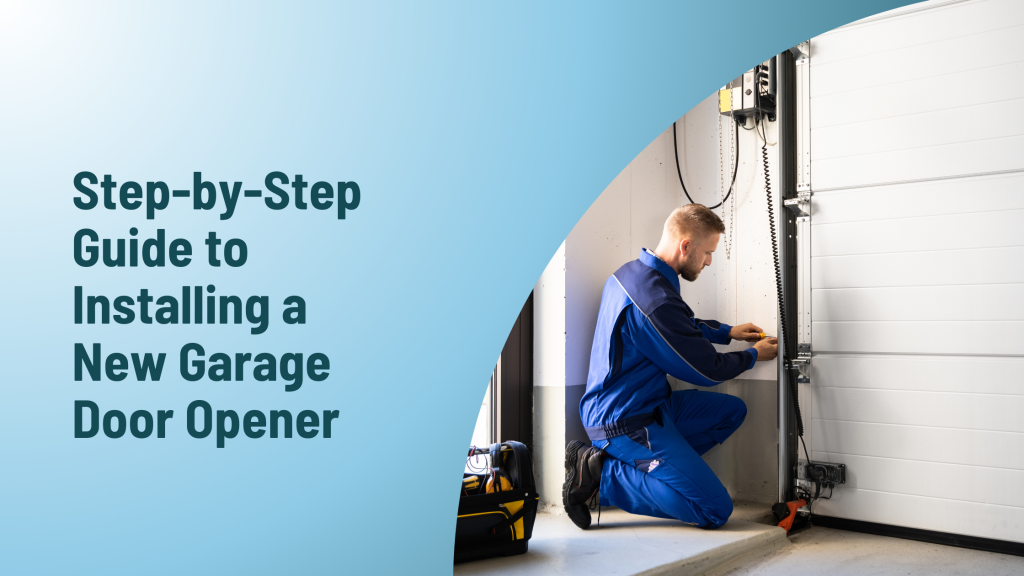Tools and Materials Needed
Installing a new garage door opener can seem like a daunting task, but with the right tools and a bit of patience, you can handle the job yourself. Before you begin, it’s important to gather all the necessary tools and materials to ensure a smooth and efficient garage opener installation.
Essential Tools
To get started, you’ll need a set of basic tools for the installation process. Some of the most common tools required for garage door motor installation include:
- Wrenches and Sockets: A socket wrench set will be necessary for tightening bolts.
- Screwdrivers: Both flathead and Phillips screwdrivers will be used for securing the opener and other components.
- Ladder: Since you’ll be working on the ceiling, a sturdy ladder is essential for reaching high spots.
- Drill and Drill Bits: To make precise holes for mounting the opener and other hardware.
- Measuring Tape: Ensures accurate placement of the opener and brackets.
- Level: Helps ensure that everything is installed straight and properly aligned.
Materials and Components
The main materials you’ll need for automatic garage door opener installation are typically included in the opener kit, but you should double-check to make sure all components are present:
- Garage Door Opener Motor: The motor will power the door’s operation.
- Rail and Track System: This is the system that helps move the door up and down.
- Header Bracket: Supports the motor and connects it to the door.
- Safety Sensors: These sensors prevent the door from closing if there’s an obstruction in the way.
- Remote Control and Wall Switch: For easy operation of the garage door.
- Fasteners: Screws, bolts, and other hardware for attaching the opener.
Safety Equipment
Installing a garage door opener involves working with heavy equipment, so safety is a priority. Make sure to have the following safety gear on hand:
- Gloves: Protect your hands from sharp edges and rough surfaces.
- Safety Glasses: Protect your eyes from dust and debris while drilling or cutting.
- Steel-toe Boots: If you’re working with heavy components, steel-toe boots will protect your feet from accidental drops.
Preparing for Installation
Before beginning the garage door opener installation, there are a few important steps to take to prepare the garage and make the process easier.
Removing the Old Garage Door Opener
If you’re replacing your garage door opener, start by disconnecting the power and removing the old unit. To do this, unbolt the opener from the ceiling, detach the motor, and remove any electrical connections. Keep in mind that some older units may require more time for removal due to rust or wear on the bolts.
Inspecting the Garage Door
Before installing your new garage opener, check the condition of your garage door. Ensure that the door is balanced and doesn’t have any issues like broken springs or misaligned tracks. A faulty door can make attaching the garage door opener to the door difficult and unsafe.
Reading the Manufacturer’s Instructions
Each garage door opener is different, so it’s essential to read through the manufacturer’s instructions. These directions will guide you on proper assembly, installation, and safety measures, ensuring that you follow the correct procedure for your specific model.
Step-by-Step Installation Process
Once you have everything ready, follow this step-by-step guide to install your new garage door opener. The process is straightforward, and with a little effort, you can successfully complete your automatic garage door opener installation.
Step 1: Assemble the Garage Door Opener
Start by assembling the main components of the opener. Attach the rail to the motor unit, and ensure that the chain or belt is securely in place. Follow the instructions to avoid any misalignment issues that could affect the door’s movement.
Step 2: Mount the Opener to the Ceiling
Next, position the motor on the ceiling, ensuring that it is centered above the garage door opening. Use the measuring tape to double-check the placement, and then secure the motor unit with appropriate brackets and bolts. This step may require a second person to help lift the unit into place.
Step 3: Install the Header Bracket
The header bracket is responsible for connecting the opener to the door. Use your level to ensure the bracket is mounted straight and in the correct position. This is crucial for the smooth operation of the door once the opener is in place.
Step 4: Connect the Rail and Opener to the Header Bracket
With the header bracket in place, connect the rail and opener to the bracket, following the instructions provided by the manufacturer. Make sure the connections are secure before proceeding to the next step.
Step 5: Install the Safety Sensors
For safety, install the safety sensors on each side of the garage door, just above the floor. These sensors should be mounted around 4 to 6 inches off the ground, facing each other. Proper alignment of the sensors is essential to ensure they can detect any obstacles in the door’s path.
Step 6: Connect the Opener to the Garage Door
Now that the opener and motor are securely mounted, attaching the garage door opener to the door is the next step. Use the provided hardware to connect the rail to the top of the garage door. Make sure the door moves smoothly when manually operated before connecting the opener to the electrical system.
Step 7: Wiring the Opener
Next, you’ll need to wire the opener. Connect the motor’s wiring to the garage’s electrical system, ensuring all connections are tightly secured. Install the garage door remote installation and wall switch, following the manufacturer’s instructions for proper wiring.
Testing and Adjusting the Garage Door Opener
Once the garage door opener installation is complete, it’s time to test its functionality and make any necessary adjustments.
Checking the Door’s Operation
Test the automatic garage door opener by using the remote or wall switch to open and close the door. Ensure the door opens and closes smoothly without any unusual noise or resistance. Check that the door is balanced, and adjust if necessary.
Adjusting Force and Travel Limits
Modern garage door openers allow you to adjust the force required to open and close the door, as well as the travel limits (how far the door moves). These settings are important for proper operation and to prevent strain on the motor.
Testing Safety Features
Finally, test the safety features of your diy garage door opener. Ensure the door reverses automatically if an obstacle is detected, and verify that the sensors work by placing an object in the door’s path.
Tips for a Successful Installation
Follow these tips to ensure your diy garage opener installation is a success.
Follow Manufacturer Guidelines
The manufacturer’s instructions are your best resource for how to put up a garage door opener properly. Stick to these guidelines to avoid common mistakes that could compromise the safety or functionality of your opener.
Seek Help if Needed
If you find the installation too challenging or time-consuming, don’t hesitate to ask for help. A second set of hands can make replacing your garage door opener much easier.
Perform Regular Maintenance Post-Installation
After the automatic garage door opener installation is complete, schedule regular maintenance to keep your opener in top condition. Lubricate the moving parts, check the safety sensors, and inspect the door’s balance periodically.
With the right tools, materials, and a clear understanding of the garage door motor installation process, installing a new garage door opener can be a manageable DIY project. By following this step-by-step guide, you’ll have your new garage opener installation completed in no time, improving the convenience and security of your home.



